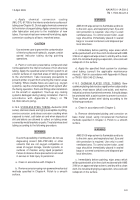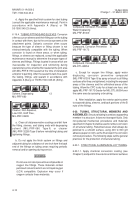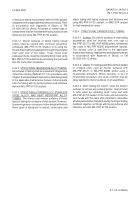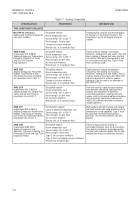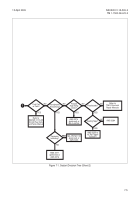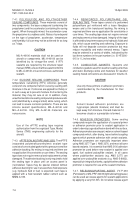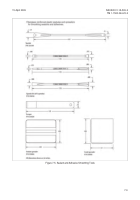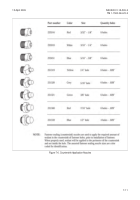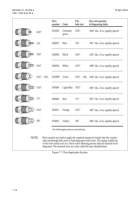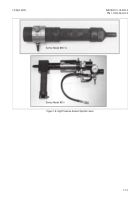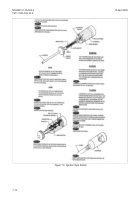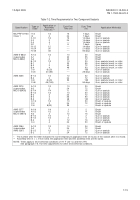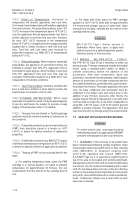TM-1-1500-344-23-2 - Page 123 of 240
7-7
NAVAIR 01-1A-509-2
TM 1-1500-344-23-2
15 April 2009
Model 850 Manual Sealant Dispensing Gun
Notes:
1. Requires no air or power supply.
2. Rugged, heavy guage metal construction.
3. Easy to operate.
4. Dipenses a wide range of sealants, adhesives, or other materials.
5. Handles thick, viscous materials.
Figure 7-3. Manual Sealant Gun
Figure 7-2. Pneumatic Sealant Gun
2.5 oz. Disposable Plastic Cartridge
(incl. plunger, seal, and cap)
6 oz. Disposable Plastic Cartridge
(incl. plunger, seal, and cap)
2.5 or 6 oz.
Metal Retainer Barrel
Knob
Assembly
Gun Handle
Assembly
Air Hose (5, 10, 20, or 25 feet)
Typical Application Nozzles
Hansen Quick Disconnect
Model 250-A
Pneumatic Sealant Dispensing Gun (With Handle)
Available in 2.5 oz. or 6 oz. Metal Retainers
Notes:
1. All parts interchangeable.
2. Plastic cartridge and metal retainer determine capacity. All other
parts are identical.
3. Pistol grip handle may be removed to convert to lever throttle for
more clearance, better manipulation, and use in confined areas.
4. 2.5
oz. capacity recommended for most field repairs.
2.5 oz. Metal Retainer
6 oz. Metal Retainer
1
16
" Orifice (No. 252)
3
32
" Orifice (No. 430)
1
8
" Orifice (No. 480)
to contact any surface(s) where sealant is to adhere.
Sealant will not adhere to surfaces coated with release
agent. If contact surface to be sealed becomes
contaminated with the release agent, remove
contaminant using a clean cloth moistened with an
approved solvent. Reapply adhesion promoter as
necessary.
7-5. SEALING EQUIPMENT.
The following sealing
equipment is available.
7-5.1. SEALANT GUN. Sealant guns are available for
both pneumatic and manual application of sealants,
adhesives, and potting compounds (see Figures 7-2
and 7-3). The Semco Model 250-A gun, or equivalent,
is fitted with one of the nozzles from Figure 7-4 and
used for the application of fillet seals. When using a
sealant gun, the nozzle tip must be pointed into the
seam and maintained at a 45 degree angle to the line of
travel, forcing the bead of sealant to precede the gun tip
to minimize entrapment of air. Use fairing/smoothing
tools (i.e., spatulas and spreaders) shown in Figure 7-5
to work sealants into seams.
Back to Top

